Year 6 had a fascinating morning, with doctors from Guy’s and St. Thomas’ Hospitals. We learnt CPR (so that we can provide clear instructions to adults – it’s very tiring!); we learnt and practiced the recovery position with our friends…and sang Staying Alive!
Afterwards, we went back to the classroom and had the chance to ask some questions of our own – it was really interesting!
What did you ask and what was the answer?
What did you learn and how will this be helpful in the future?
How has meeting these brilliant doctors affected you?
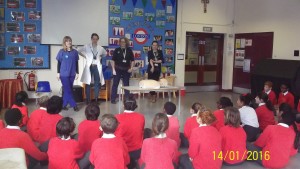

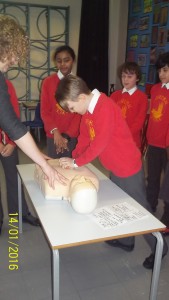
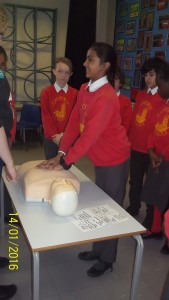
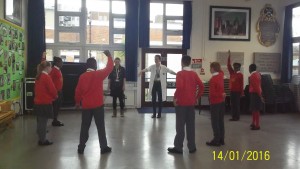
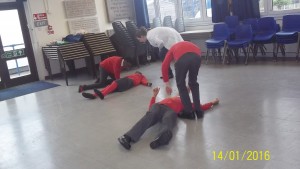
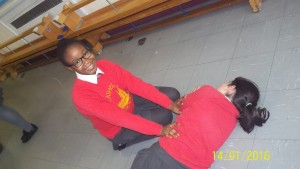
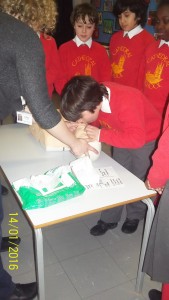
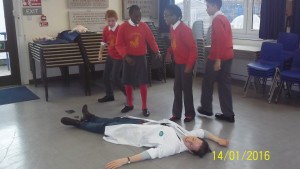
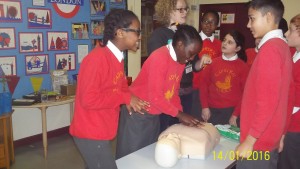
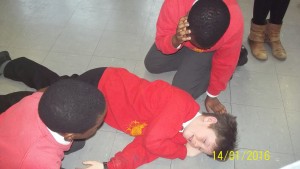
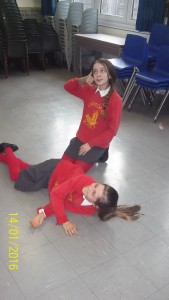
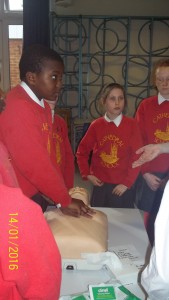
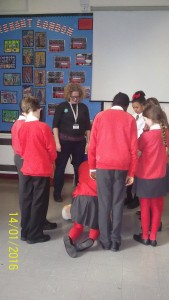
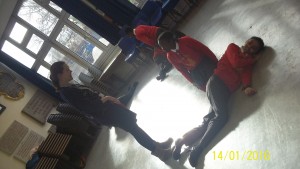
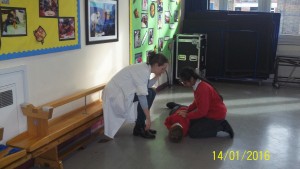
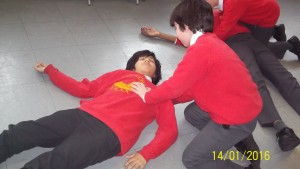
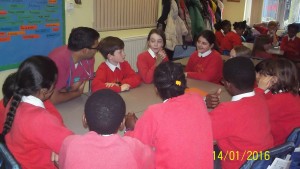
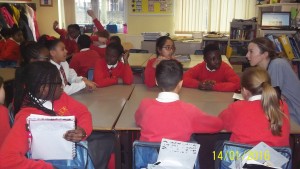
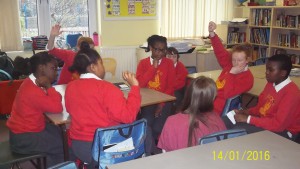
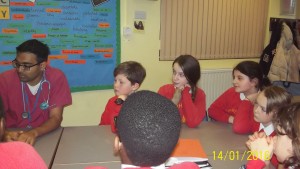
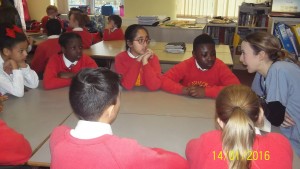
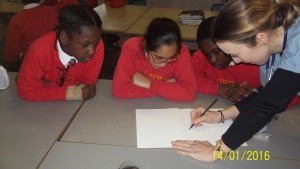
Hoped you had a nice time.
I learnt that if someone is unwell and they are on the ground, you have to put them in the recovery position; with one of their legs across the other and their arm under their head like a pillow, you also have to turn them on their side (it does not matter which side but traditionally it is their left side). I also learnt that if you are doing chest compression, on someone that is not breathing, you have to aim to do to 100 pumps in one minute, to the rhythm of the song Staying Alive.
What did you ask and what was the answer?
I asked how was it when you got your first patient and our doctor answered, “I didn’t one patient, I got forty to begin with because I started as a surgeon but then I moved to imagery.” And then my group asked questions to him about how he became a doctor because his auntie had cancer and the doctors were really nice and that’s what inspired him to be a doctor.
What did you learn and how will this be helpful in the future?
I learnt how to do chest compression and the ratio to chest compression to breaths and it is 30:2.
I also learnt what position to put someone when they are sick and aren’t getting up and if they are wearing a ring you turn the ring upside down.
How has meeting these brilliant doctors affected you?
It has affected me because I want to be a doctor when I’m older so I am lucky to be in this school because they give us as many opportunities as they can to help us learn so thank you Cathedral Primary School, thank you.
What did you ask and what was the answer?
I asked how was it when you got your first patient and our doctor answered, ” I didn’t get one patient I got fourty to begin with because I started as a surgeon but then I moved to imagery.” And he the doctor my group asked questions to he became a doctor because his auntie had breast cancer and the doctors were really nice and that’s what inspired him to be a doctor.
What did you learn and how will this be helpful in the future?
I learnt how to do chest compression and the ratio to chest compression to breaths and it is 30:2.
I also learnt what position to put someone when they are sick and aren’t getting up and if they are wearing a ring you turn the ring upside down.
How has meeting these brilliant doctors affected you?
It has affected me because I want to be a doctor when I’m older so I am lucky to be in this school because they give us as many opportunities as they can to help us learn so thank you Cathedral Primary School, thank you.
This morning we got a visit from doctors from Guys and St Thomas’s Hospital. We learnt many different types of first aid, like recovery position and CPR. They gave us a lot of information and now we know lots about first aid. For CPR, we have to lock our left hand in our right, or the other way round and then, by the breast bone, we push the heel of our hand down. If we know the person we do 30 chest compression and 2 breaths. If we don’t know him/her, we do 30 chest compressions and no breaths.
For the recovery position:
1) We check if he/she is still breathing
2) If they are or are not, still call the ambulance (999)
3) You keep them on speaker phone
4) For the recovery position, you cross one leg over the other and tilt them to the side, in case they vomit and it goes back in their mouth and they start choking
5) If they have a ring on the hand they have been tilted on, do it with the other hand
6) Keep them like that until the ambulance comes
Thank you for the assistance you gave us in first aid so we know how to use it properly!
Wow, it looks so fun doing that, I really missed out, and, thanks to George I know now how to do mouth to mouth. My mother did a first aid course for her work and taught me some of the techniques.
If someone is choking, turn their head to the side or you could get behind him/her, put your hands around their waist and pull in, until the object/ food that caused the choking comes out. That is all I know and if you know any other techniques please list them below.
I asked what was one of the hardest situations that you have come across as a doctor. One the doctors said, “One of the situations that have been really tricky is when I had a patient and the parts of their body were not strong enough to fight back the bacteria.”
I learnt about CPR. We learnt, if we see someone who is unconscious on the floor you have to go to them and do 30 chest compressions. If it’s someone from your family you can keep on doing 30 compressions then 2 breaths. We are really lucky that we have this opportunity. These doctors have helped us because in the future we will know what to do.
I really enjoyed meeting the junior doctors today. They showed us how to do CPR on someone if they are not breathing. We also got to ask really interesting questions to them. Here are some steps on what to do if a guardian/person isn’t breathing.
1. Put your head close to their mouth to see if they are breathing.
2. Shake them to see if they are alive.
3. If you have a phone, call 999 and if you don’t then let call someone for help.
4. Put you hand out straight with your fingers spread then put your other hand through the gaps of your fingers.
5. Push hard onto the person’s breastbone (30 times).
6. If you know the person, then tilt their head back and hold their nose. Then open their mouth and blow deep breaths into the person’s mouth.
7. If the ambulance arrives they will look after the person carefully.
It was really cool because we learned how to do mouth to mouth, and how to do the compression. When we learned to compress, we had to keep our arms straight and when we did mouth to mouth we had to hold the nose and tip up the neck, so you can have the perfect position to do mouth to mouth. After that, me and Francisco did the recovery position when you can’t get up and someone helps you and call the Ambulance.
Today we were lucky to have junior doctors from Guys and St Thomas’s Hospital who taught us how to do the Recovery Position and Chest Compressions. To do the chest compression, you have to put one hand straight and have your other hand clenched it over and then you have to make sure heel of your hand is in the middle of the person’s chest and then you have to press up and down but make sure that you don’t lift your hands up also keep a steady rhythm (preferably, Staying Alive). Also if you know the person – like a relative – then lift their head and squeeze their nose and give them mouth to mouth and for every 30 chest compression give to mouth to mouth.
The recovery position is when you a person is lying on the ground; you have to turn their feet to the side as if they were walking and move their hand under their head as if they were sleep so if they throw up, it goes on the side not on in their mouth. Also, when you call 999 on your phone, make sure you stay on the line and they will ask you whether the person is breathing, where you are, and etc. But if you have no phone with you ask someone around you, and if there is an extra person, teach them the chest compression and then they can do if for you and you switch with them, but if you are alone, then run to the nearest road and get attention for help.
This morning (10/02/2016) Junior Doctors, that were on strike, came to OUR school to teach us first aid and to answer the questions the we gave them.
The doctors showed us what to do if we ever saw someone stop breathing, doing CPR. This is what you do:
1) Find the middle of the person’s chest.
2) With both of your hands, press down on your person’s chest. You have to do 2 every seconds.
3) If you are getting tired then ask someone else to do it.
4) Call the ambulance – 999.
We practiced this on a bench and a on a dummy!
If you know the person, then breath into their mouth.
The recovery position/what you do if someone faints:
1) Check the person is breathing.
2) Shake the person to see if they are sleeping.
3) Lift up the knee and put it on one side.
4) Put the hand under the person’s head so the head is safe.
5) Stay with them.
6) Call the ambulance – 999.
I practiced this with Bea. It was so fun.
Afterwards we asked the doctor questions. Here are some facts I learnt:
– You should eat a wide range of different coloured fruits as they all have different things that are good for you.
– You should go to bed early as if you go to bed late then you do things that are bad for your health.
I learnt lots of interesting fact and learnt lots of things, it was so fun. 10/10 – 5 stars.
I found out a lot of things; here is a list of facts about mouth to mouth and chest compressions:
1. Only do mouth to mouth to people you know when they can’t breathe
2. Do 30 chest compressions and 2 mouth to mouths and a good trick to use when doing chest compressions is singing staying alive for 30 seconds because when you do them they have to be quick.
3.The recovery position.
What did you ask and what was the answer?
I asked, ‘What did you do before you did radiology [work with x-rays]?’
The answer was, ‘I used to work with Neurology which is the brain. I use to take tumors out of some people’s brains and deal with bleeding in the brain. Then I worked with the elderly – because you know often the elderly get ill and I worked with a patient that had dementia.`
What did you learn and how will this be helpful in the future?
Today I have learnt so much:
1. Chest Compressions. You do these by putting one hand flat and put the other hand to clench on to it a place you hand one the Breast Bone and put the heel of your hand down and press done a lot. If you need help with the pace just sing the song, `Staying Alive` y
You are aiming for 100 compressions per minute.
2. I learnt the mouth to mouth, which you should only do with family. Tilt their head up and hold the nose and put your mouth over theirs and breathe out to give them a natural feel of air.
3.The Recovery Position, which will help if somebody is lying on the floor, ill but still conscious. Take their furthest leg and bring it round to the side grab his/her hand and bring it round and place it gently under their head.This will help in the future by you saving a life.
The question was: what has inspired you to be a doctor? The answer was that Jan had grown up in South Africa and her mother was a nurse and then when she was older she decided that she liked science. The whole group asked: what do you do to keep healthy? One of the tips was to go to bed early so that we can process what we have learnt in that day into memory so that it is easier to access the next day. I learnt CPR (which is when you put your right hand on your left hand keeping your arms straight, then you press on the center of the chest) so that when people stop breathing I will know what to do. I also learnt that when someone is unwell you use the recovery position (which is the leg over and the hand supporting the head and then you turn the person over onto their side). Meeting the doctors has helped me understand what to do in this situation and has reminded me how important they are.
I think this will be helpful in the future because if one day I am walking down the road and I see my friend collapse and they are not breathing, I will be able to give them compressions to pump the blood around the body. Learning this helped me because now I know how to protect people even when they’re close to death for E.G. put your left hand over the right hand and then press on the person’s chest.
I asked, what inspired you to become a doctor? Jan said, ‘When I was little, my mum and I lived in South Africa,and everyday my mum went out and gave medicine to the sick; so that inspired me to become a doctor.’
Hello Class 6
It was lovely to meet you today. Thank you for being so enthusiastic and asking lots of interesting questions. I hope you enjoyed it. If you have any more questions just let me know.
All the best,
Dr Mustafa
Even though I wasn’t there, by the looks of the pictures they look fun!
Today was a really interesting and fun day; we learnt how to do many things that would be useful many situations at home and would also give us better knowledge in medical work at a hospital. This was a great experience and we all learnt so much, I am really glad the junior doctors came today as this is a once in a lifetime experience. Here is some of the things that we did:
First of all, my group (which consisted of around ten people) learnt how to perform CPR. We used one of the benches from the hall, using this we were able to practice our CPR which came in useful in a later section.
Soon after, my group moved to a new section with to different doctors and there, we learnt what the recovery position is and how and when to use it. We watched a demonstration (that the junior doctors showed us) and after that we were put in partners. My partner (Ruby) and I went to a spacious section of the hall and we practiced the recovery position on each other, it was so much fun and we both thought about the real life situation and put that into our practice (e.g. pretending to call the ambulance, checking for breathing).
After a little more practicing, our group moved onto the last section with yet another new doctor; there we learnt how to do CPR on a member of our family (this is different because you can do mouth to mouth – where you breath into the patients mouth) and we practiced this on a dummy.
The question I asked was:
“What is the most complicated medicine name and what does it mean?” the answer I received was, “There are many different medicines and all of them have peculiar names, this is because all of the things within medicines will cure different things. While i was in university, i learnt many words that as a doctor, i needed to know all of those words you will find in a medicine depending on what the medicine is for.”
Thank you to all of the junior doctors who taught us how to do these things and answered our questions, they really helped me and the rest of the class to expand our knowledge in first aid.
Wow you might have learnt so much about CPR! You must have enjoyed it with people who work in St.Thomas and Guys hospital.